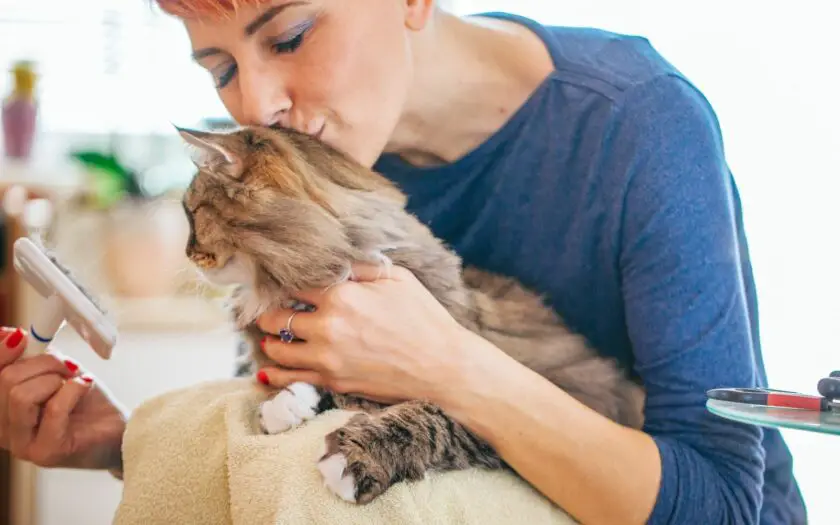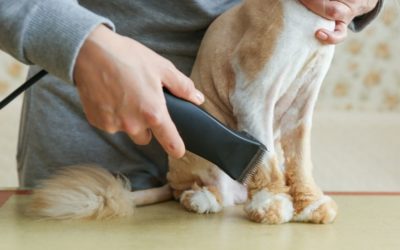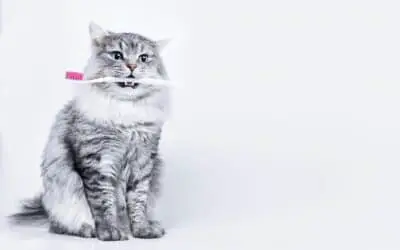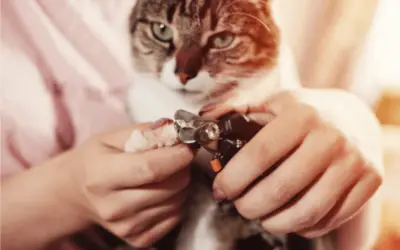Common problem: you want to groom your kitty, and they hate you for it! Anxious cats usually aren’t very fond of getting groomed, because it puts them in a situation where they feel trapped. Whether you’re trying to groom an anxious cat yourself at home or have booked them in to see a professional, you might be wondering if there are any measures you can take that will help control the amount of stress during groom time. So, let’s take a look!
Top three tips for stress-free grooming
Have a long-haired cat that hates being brushed? Here’s what you can do to make grooming easier:
1. Start young
Your cat may not need grooming as a kitten, but it’s best to get them used to it from the start. If your cat thinks grooming is a part of normal life, they’ll be more likely to accept it when they’re all grown up and actually need it. Another big advantage to starting young is that your cat shouldn’t have knots that pull or sore bones that hurt when pressed, so it’ll hurt less and be a much less annoying experience.
When you first get your cat, no matter what age, train them to accept grooming by doing it little and often and rewarding them for staying still.
2. Make it positive
Did you know that cats can be trained just like dogs? Actually, all animals respond to positive reinforcement training, you can even use clicker training like you would for dogs. Make any grooming experience as positive as possible using extra-tasty treats such as small amounts of chicken or white fish. Don’t forget that these contain calories, though – you’ll need to adjust their evening meal accordingly to prevent obesity!
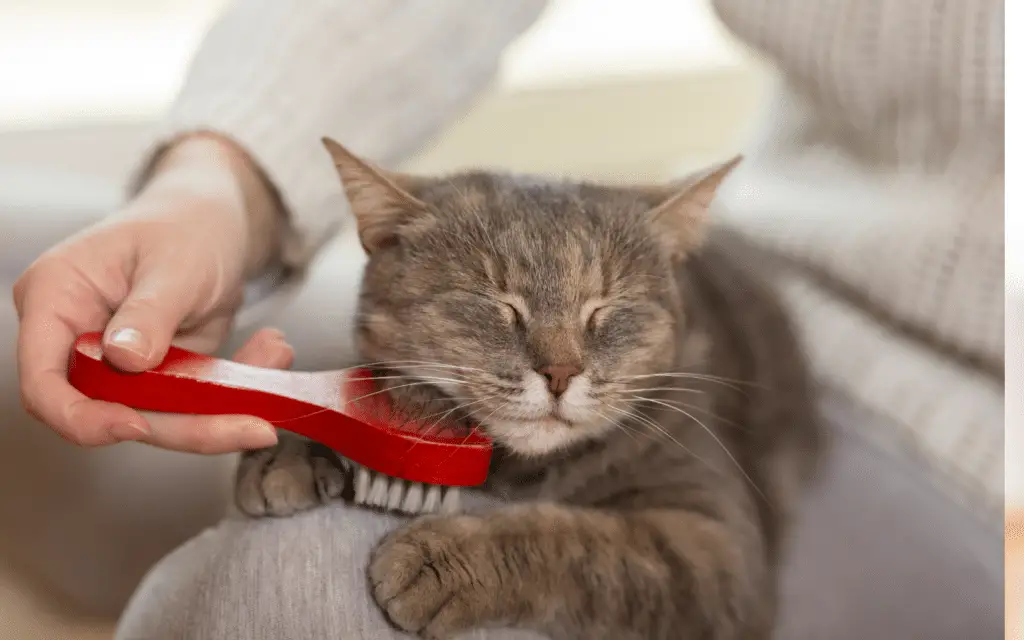
3. Go slow to go fast
It might seem like a hassle, but don’t try to groom your anxious cat all in one go. Cats don’t have the most patience, and chances are they’ll react badly to being pinned down and brushed. You’ll likely have better luck if you just do a little each day rather than their whole body once a week.
I used to work in a feline-only practice and we’d easily be able to groom cats who would normally need sedating by taking it slow, doing a bit at a time, staying calm, and providing lots of lovely food and praise!
Grooming a severely anxious cat
If your cat panics at the sight of a grooming brush, she probably needs a little bit more than a few sweet words and some treats. Herbal calming supplements are available, which might take the edge off and allow them to relax enough to enjoy the experience. These are available over-the-counter, but they’re unlikely to be enough for a severely anxious cat.
Additional reading: How to build an anxious cat’s trust and confidence
Whilst you can ask your vet for a prescription sedative, the best bet is usually to book them into the vets for a groom. Some vets will have a qualified groomer in-house they can use as soon as your cat is asleep. Whilst this might seem a bit drastic, the sedative is likely to do far less harm to your cat than the stress of being groomed, and you’ll avoid injury too!
Should I let my vet take care of grooming?
I always like to remind clients that vets aren’t groomers. We really are going to give your cat a buzz cut. Therefore, if looks are very important to you, it’s best to find a vet that works with a groomer, or a mobile groomer that doesn’t mind visiting your vet’s practice once the cat is sedated.
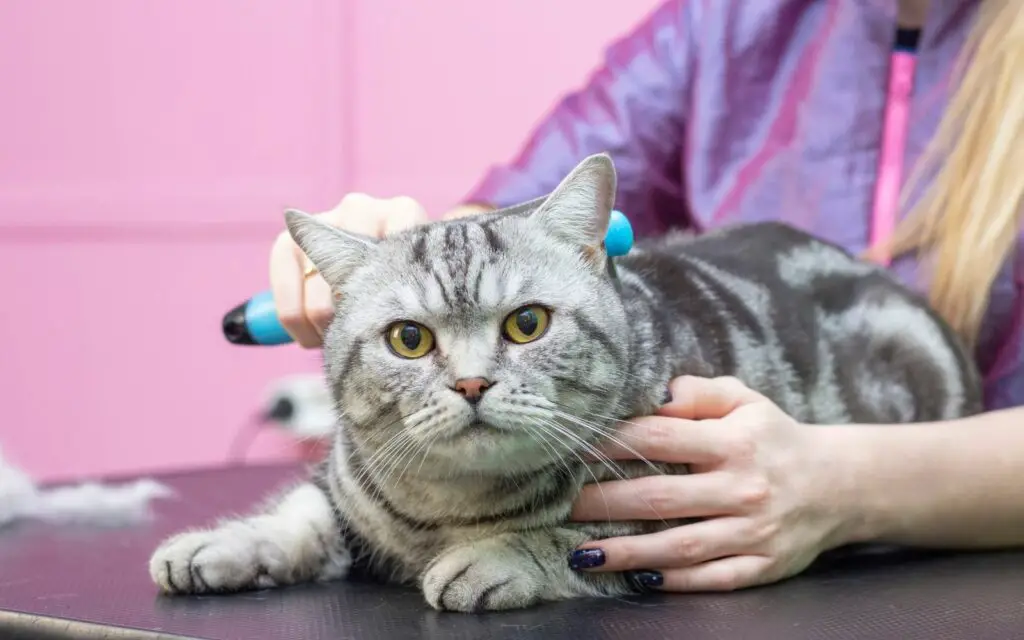
Don’t forget to keep up the grooming once your cat is home! It’ll be easier when they aren’t so sore!
Final words
Grooming any cat can be a challenge! Hopefully, my top tips on how to groom an anxious cat will help you keep your cat clean without the stress. Don’t forget to talk to your vet if you are struggling – they may be able to help.
FAQ
We have a full article on why cats need to be groomed, but here’s the short answer: Whether your cat needs some help or not will depend a lot on breed and age. Long-haired breeds such as Persians and Maine Coons need to be groomed by their owner regularly to prevent tangles from turning into matts.
Regardless of coat length, many elderly cats also might need help with their grooming, especially if they are suffering from arthritis. That’s because the nature of this disease makes stretching too uncomfortable, which leaves a cat unable to do the grooming by itself.
In general, cats don’t need bathing, and it’s not a good idea to bathe regularly. Not only does bathing strip the skin of protective oils and cause it to dry out, but the scary experience and overwhelming scent of products can be very stressful for cats as well. Bathing too often is a sure-fire way to make a cat anxious about grooming, so it’s best to avoid it where possible.
To summarize, only bathe a cat if there are no other options or for their own safety. For instance, if they’ve rolled in a poisonous or very sticky substance. A sponge bath is a better option if their whole body doesn’t need doing.

